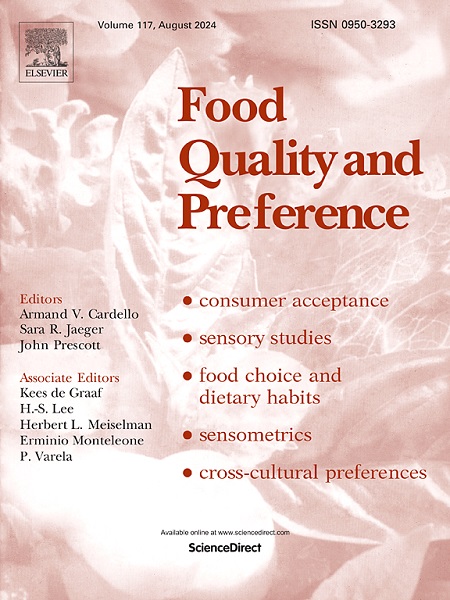Do consumers prefer nearby ugly food? Examining the role of spatial-social distance in suboptimal produce preference
IF 4.9
1区 农林科学
Q1 FOOD SCIENCE & TECHNOLOGY
引用次数: 0
Abstract
Visually suboptimal produce refers to produce with certain aesthetic imperfections. In contrast to premium produce, consumers often underestimate the perceived quality of suboptimal produce, leading to reluctance to purchase and resulting in considerable waste and subsequent environmental issues. We observed that production information for suboptimal produce may contain elements of psychological distance, which could serve as a novel factor in promoting consumer purchases of these products. To explore this, we conducted three online experiments to investigate the impact of spatial and social distances on consumers’ purchase intentions. Drawing on Construal Level Theory (CLT) and validated through experiments, our findings indicate that consumers are more likely to choose suboptimal produce with psychologically proximal. Additionally, psychological ownership and perceived quality serve as sequential mediators between psychological distance and purchase intentions, a psychological mechanism that is unique to suboptimal produce (i.e., this effect does not apply to premium produce). Furthermore, we incorporated the concept of information framing, a commonly used tool in previous studies, into the discussion of psychological mechanisms to further clarify its operational process. The results provide new theoretical and practical insights for the market promotion of suboptimal produce.
消费者是否更喜欢附近丑陋的食物?考察空间社会距离在次优生产偏好中的作用
视觉次优产品是指具有一定审美缺陷的产品。与优质产品相比,消费者往往低估了次优产品的感知质量,导致不愿购买,造成相当大的浪费和随后的环境问题。我们观察到,次优产品的生产信息可能包含心理距离的元素,这可能是促进消费者购买这些产品的新因素。为了探究这一点,我们进行了三个在线实验来研究空间和社会距离对消费者购买意愿的影响。利用解释水平理论(CLT)并通过实验验证,我们的研究结果表明,消费者更有可能选择心理上接近的次优产品。此外,心理所有权和感知质量是心理距离和购买意愿之间的连续中介,这是次优产品所特有的心理机制(即,这种效应不适用于优质产品)。此外,我们将以往研究中常用的信息框架概念纳入心理机制的讨论中,进一步阐明其运作过程。研究结果为次优农产品的市场推广提供了新的理论和实践见解。
本文章由计算机程序翻译,如有差异,请以英文原文为准。
求助全文
约1分钟内获得全文
求助全文
来源期刊

Food Quality and Preference
工程技术-食品科技
CiteScore
10.40
自引率
15.10%
发文量
263
审稿时长
38 days
期刊介绍:
Food Quality and Preference is a journal devoted to sensory, consumer and behavioural research in food and non-food products. It publishes original research, critical reviews, and short communications in sensory and consumer science, and sensometrics. In addition, the journal publishes special invited issues on important timely topics and from relevant conferences. These are aimed at bridging the gap between research and application, bringing together authors and readers in consumer and market research, sensory science, sensometrics and sensory evaluation, nutrition and food choice, as well as food research, product development and sensory quality assurance. Submissions to Food Quality and Preference are limited to papers that include some form of human measurement; papers that are limited to physical/chemical measures or the routine application of sensory, consumer or econometric analysis will not be considered unless they specifically make a novel scientific contribution in line with the journal''s coverage as outlined below.
 求助内容:
求助内容: 应助结果提醒方式:
应助结果提醒方式:


